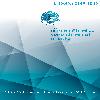Üniversite Öğrencilerinin Spora Katılım Durumlarına Göre Rekabetçi Tutumlarının İncelenmesi
Bu çalışmanın amacı, Hitit Üniversitesi’nde öğrenim gören öğrencilerin spor katılım durumlarına göre rekabetçi tutum düzeylerinin incelenmesidir. Araştırmanın evrenini Hitit Üniversitesi’nde öğrenim gören öğrenciler, örneklem grubunu ise tesadüfî örnekleme yöntemiyle seçilmiş 782 öğrenci oluşturmaktadır. Araştırma verilerinin toplanmasında tarama modelinden yararlanılmış ve anket tekniği uygulanmıştır. Araştırmada uygulanan anket iki bölümden oluşmaktadır. Birinci bölümde kişisel bilgiler ikinci bölümde ise likert tipindeki 23 sorudan oluşan Akbayırlı (1998) tarafından geliştirilen “Rekabetçi Tutum Ölçeği” yer almaktadır. Tüm istatistiksel hesaplamalarda sonuçlar p<0.05 düzeyinde anlamlı kabul edilmiştir. Araştırmaya katılan öğrencilerin rekabetçi tutumlarının demografik değişkenlere göre farklılaşıp farklılaşmadığını incelemek için tek yönlü varyans analizi yapılmıştır. Demografik değişkenlerin ikiden fazla kategoriye sahip olanlarında ise, farkın hangi kategoriden kaynaklandığını tespit etmek için post-hoc testleri (Scheffe ve Dunnett C) yapılmıştır. Elde edilen veriler değerlendirildiğinde; yaş, cinsiyet, sigara içme ve aktif spor yapma durumlarına göre katılımcıların rekabetçi tutumları anlamlı şekilde farklılaşmamıştır (p>0.05). Yapılan analizler sonucunda rekabetçi tutum düzeyleri ile öğrencilerin eğitim gördüğü fakülte, spor yaşı ve maddi durumları arasında anlamlı fark tespit edilmiştir (p<0.05). Elde edilen veriler değerlendirildiğinde spora katılım durumları öğrencilerin rekabetçi tutum düzeylerini etkilediği belirlenmiştir.
Anahtar Kelimeler:
Rekabetçi Tutum, Spor, Üniversite öğrencileri
Investigation of Competitive Attitudes of University Students According to the Participation in Sports
The purpose of this study is to examine the competitive attitudes of Hitit University students according to their participation in sports. The sample of the research consists of 782 students who were selected at the Hitit University by random sampling method. Survey technique was used to collect research data. The survey used in the research consists of two parts. In the first part, the descriptive information is in the second part and the 'Competitive Attitude Scale' developed by Akbayırlı (1998) is composed of 23 questions of likert type. SPSS 21.0 V statistical program was used in all statistical calculations and the results were accepted as significant at p <0.05 level. One-way analysis of variance was conducted to examine whether students' competitive attitudes differed according to demographic variables. In the case of demographic variables with more than one categorical group, post-hoc tests (Scheffe and Dunnett C) were carried out in order to find out which categorical difference was caused by considering the equality of variances between groups. When the obtained data are evaluated; participants' attitudes did not significantly differ according to age, gender, smoking, and their active sport situations (p> 0.05). As a result of the analyzes; there was a significant difference between the competitive attitude levels and the faculties, sports ages and financial situation in which the students were educated (p <0.05). When the data obtained were evaluated, it was determined that the participation in sports affected the students' competitive attitude levels.
Keywords:
Competitive Attitude, Sport, University students,
___
- Adler, A. (2012). İnsan Tabiatını Tanıma. (Çev.), Ayda Yörükan, İstanbul: Türkiye İş Bankası Yayınları.
- Akbayırlı, Y. B. (1998). Bir ölçek geliştirme çalışması: Rekabetçi Tutum Ölçeği (RTÖ) geliştirilmesi, güvenirliği ve geçerliği. Yayınlanmamış Yüksek Lisans Tezi, Marmara Üniversitesi, Eğitim Bilimleri Enstitüsü, İstanbul.
- Akkaya, S. (2008). Ortaöğretim (Lise) öğrencilerinde rekabetçi tutum ile ana-baba tutumları arasındaki ilişki düzeyi. Yüksek Lisans Tezi. Sakarya Üniversitesi Sosyal Bilimler Enstitüsü, Sakarya.
- Aktan, C., ve Vural, İ. (2004). Yeni Ekonomi ve Yeni Rekabet. Ankara: İstiklal Yayınları.
- Bernstein, E., Phillips, S. R., & Silverman, S. (2011). Attitudes and perceptions of middle school students toward competitive activities in physical education. Journal of teaching in physical education, 30(1), 69-83.
- Ekiz, C. (2010). Türkiye’de Rekabet Yönetimi. Ankara: Siyasal Kitabevi.
- Güneş, S. (2012). Rekabet Düzeyi İle Büyüme Arasındaki İlişki: Panel Analizi. Finansal Araştırmalar ve Çalışmalar Dergisi, 3(7), 43-54.
- Hong, J. C., Hwang, M. Y., Liu, Y. T., Lin, P. H., & Chen, Y. L. (2016). The role of pre-game learning attitude in the prediction to competitive anxiety, perceived utility of pre-game learning of game, and gameplay interest. Interactive Learning Environments, 24(1), 239-251.
- Jersild, A. (1979). Çocuk Psikolojisi. (Çev. Gülseren Günçe). Ankara.
- Kılınçarslan, G., Ulucan, H., Kuyulu, İ., ve Beltekin, E. (2018). Beden eğitimi ve spor yüksekokulu 1 – 4 sınıf öğrencilerinin rekabet etme düzeylerinin incelenmesi (Erciyes Üniversitesi Örneği). ERPA International Congresses on Education, 28 Haziran – 1 Temmuz 2018 İstanbul, Türkiye, 523.
- Köknel, Ö. (2004). Bilinçli Çocuk Yetiştirme. Ankara: Arkadaş Yayınları.
- Navaro, L. (2011). Haset ve Rekabet. İstanbul: Remzi Kitabevi.
- Pelliccia, A., Fagard, R., Bjørnstad, H. H., Anastassakis, A., Arbustini, E., Assanelli, D., ... & Delise, P. (2005). Recommendations for competitive sports participation in athletes with cardiovascular disease: A consensus document from the Study Group of Sports Cardiology of the Working Group of Cardiac Rehabilitation and Exercise Physiology and the Working Group of Myocardial and Pericardial Diseases of the European Society of Cardiology. European Heart Journal, 26(14), 1422-1445.
- Soyer, F., Yıldız, N., Harmandar Demirel, D., Serdar, E., Demirel, M., Ayhan, C., ve Demirhan, O. (2017). Üniversite öğrencilerinin rekreatif etkinliklere katılımlarına engel teşkil eden faktörler ile katılımcıların yaşam doyumları arasındaki ilişkinin incelenmesi. Journal of Human Sciences, 14(2), 2035-2046. doi:https://doi.org/10.14687/jhs.v14i2.4647.
- Stefani, E. D., De Marco, D., & Gentilucci, M. (2015). Factors affecting athletes’ motor behavior after the observation of scenes of cooperation and competition in competitive sport: the effect of sport attitude. Frontiers in Psychology, 6(1648),1-9.
- Yenidünya, A. (2005). Lise Öğrencilerinde rekabetçi tutum, benlik saygısı ve akademik basan ilişkisi. Yayımlanmamış Yüksek Lisans Tezi. Marmara Üniversitesi, İstanbul.
- Yayın Aralığı: Yılda 2 Sayı
- Başlangıç: 1995
- Yayıncı: Manisa Celal Bayar Üniversitesi, Spor Bilimleri Fakültesi
